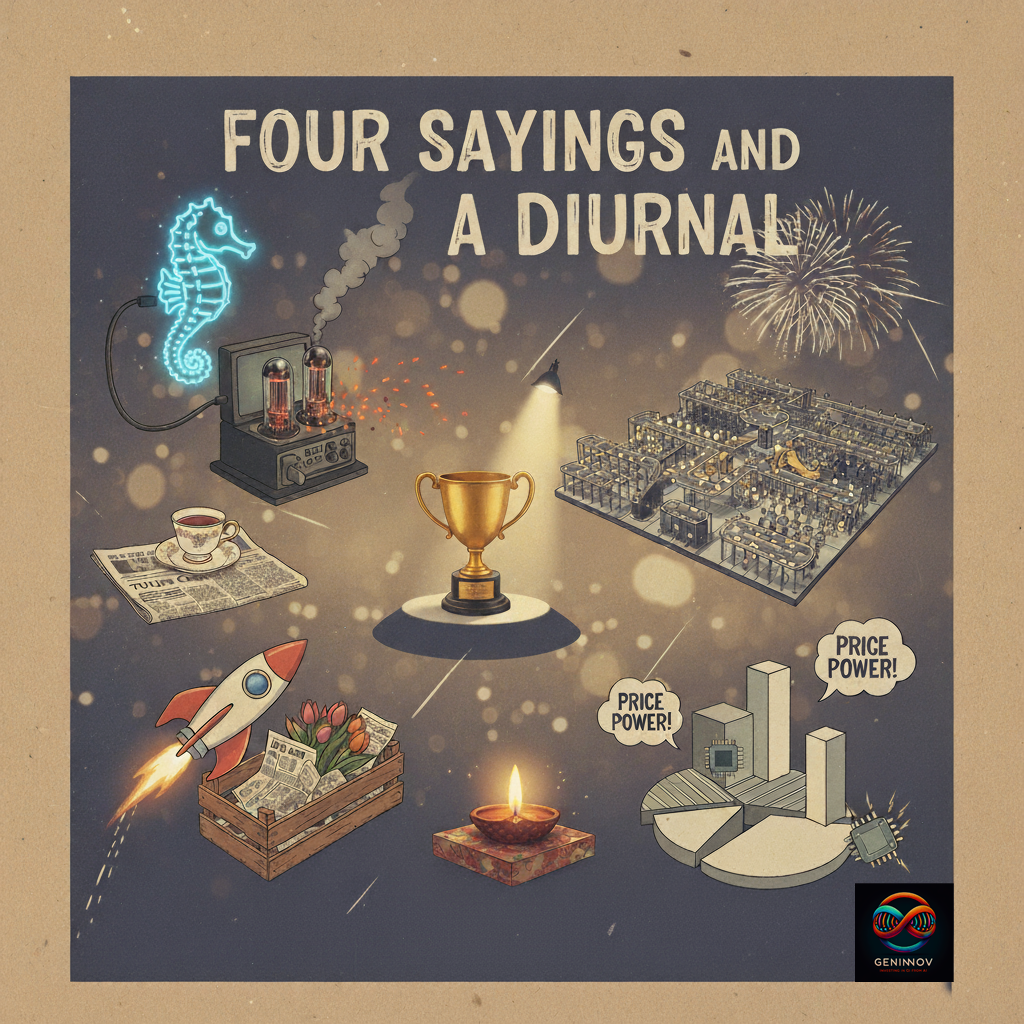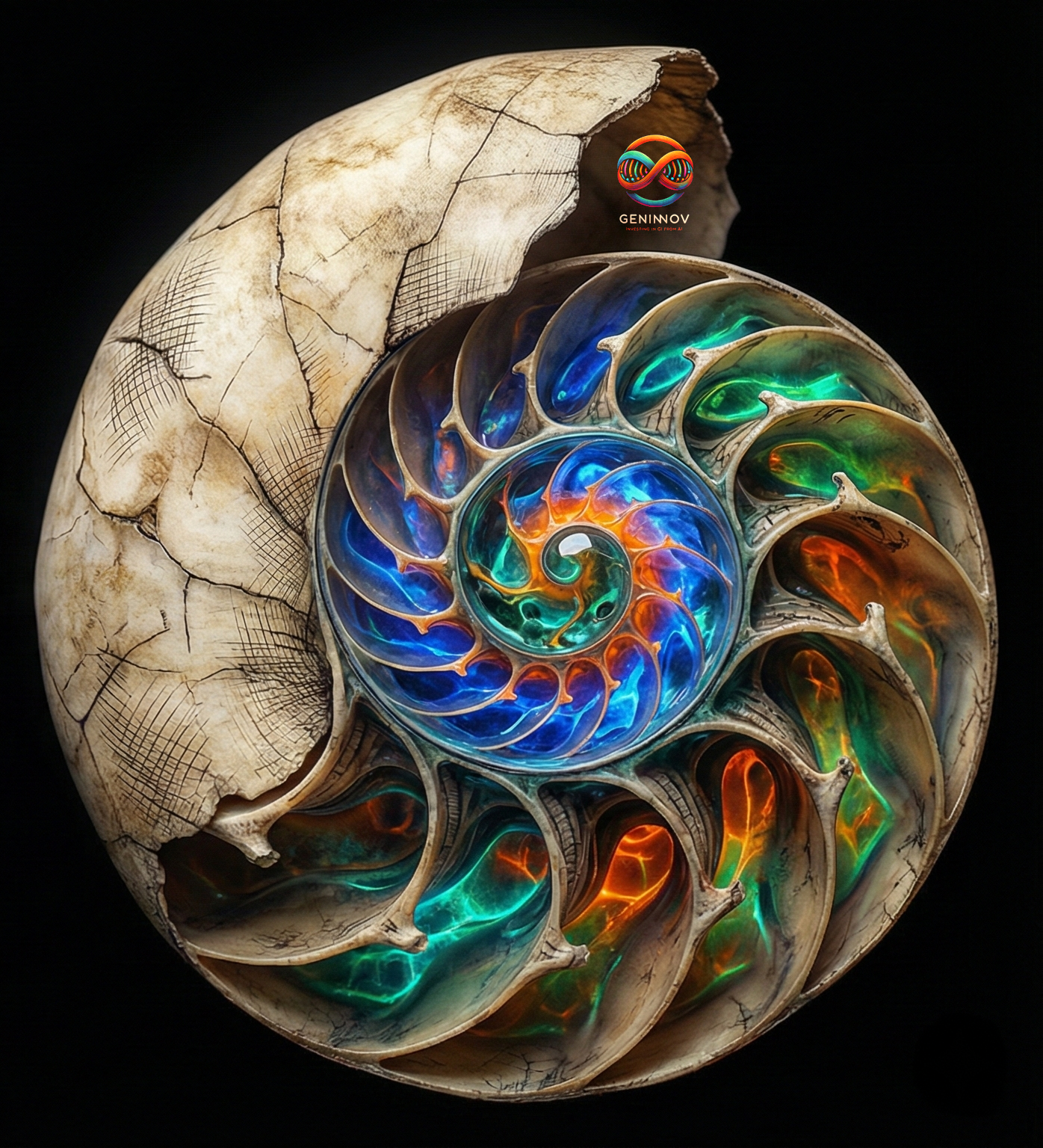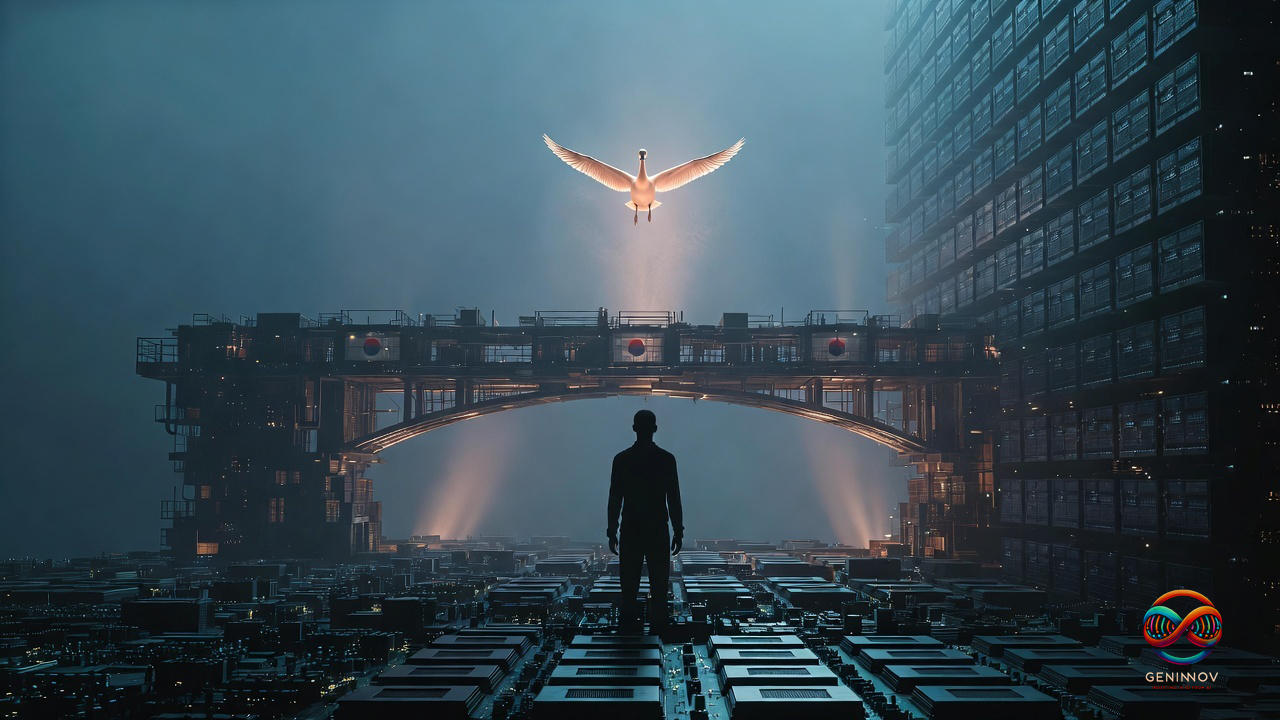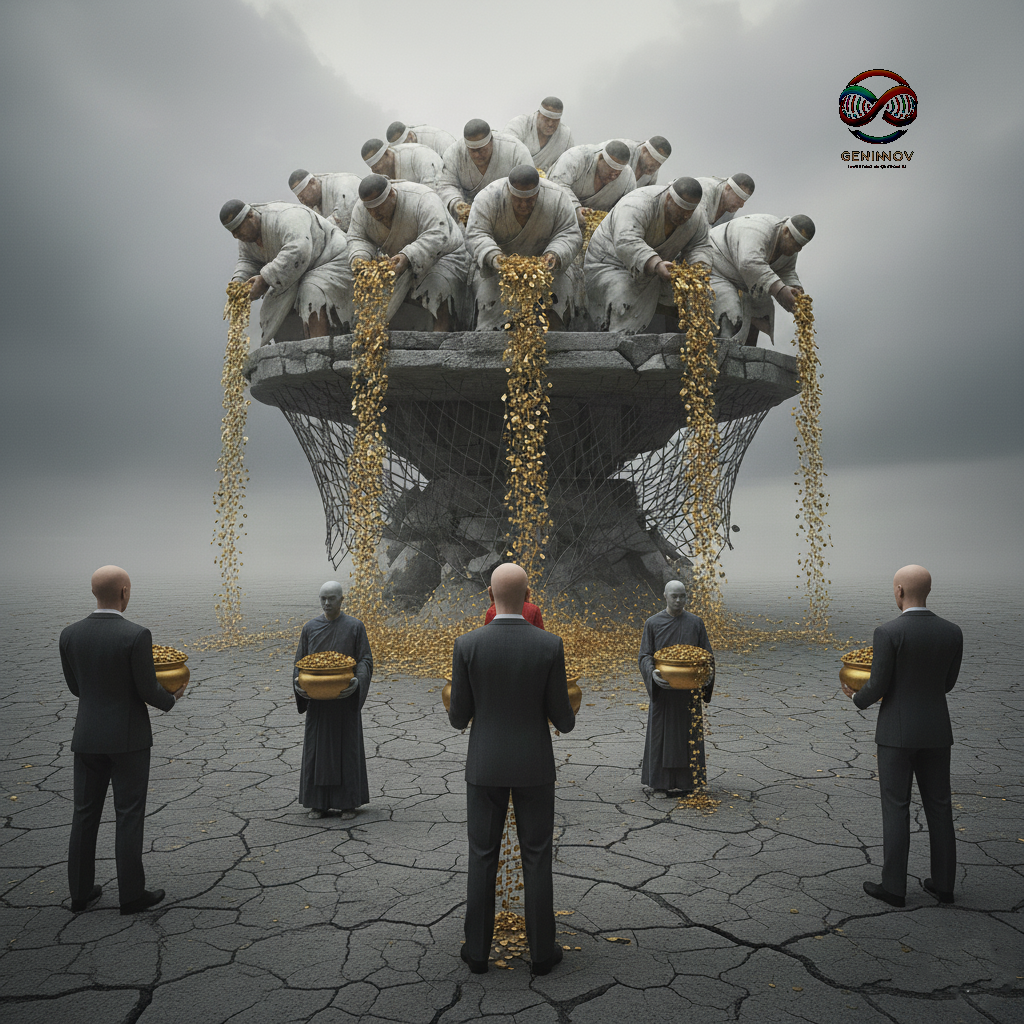There is a certain rhythm to progress, a pattern often best captured not in dense treatises but in simple, slightly odd sayings. They are the sort of thing one might overhear in a quiet London pub, where understatement is the highest form of wit; or perhaps, the sort of profound thought that only strikes after consuming one’s body weight in Diwali sweets, forcing the mind to find a new use for all that energy. We want innovations to be a grand, singular symphony. The reality, as one discovers, is a cacophony of like four different string quartets playing four different tunes in four different rooms, all at once. And then there’s the daily business of it all.
The First Saying: Never ask a machine that dreams of electric sheep a question involving a seahorse emoji.
There is a peculiar fragility to our most advanced creations. Present a large language model with a query of labyrinthine complexity, and it will compose a sonnet. Ask it to solve the protein-folding problem, and it will oblige. But, ask your GPTs to show you the seahorse emoji, one that does not exist, and they crumble.
For those unaware of the GPTs’ latest blind spots, which have gone viral, the new "how-many-rs-in-raspberry" level oddity that it cannot solve is worth Googling.
This little hiccup reveals the great, unresolved tension at the heart of artificial intelligence. On one hand, you have the magnificent, wild, probabilistic storm of neural AI. It’s emergent, creative, and can make leaps of intuition we barely understand. It dreams. On the other hand, you have the stern, dependable librarian of symbolic AI, the old school of precise, rule-based logic where A always equals A. The dream is to marry the two, to create a neuro-symbolic mind that can both write poetry and do its sums perfectly.
This philosophical split sends innovation down two fascinatingly different, yet complementary, paths. The Western preference, if one is allowed to generalize, is an investment in the potential of AI. It champions capability above all, chasing the horizon of Artificial General Intelligence. The impulse is to let the neural dreamer run free. The occasional error or bizarre hallucination is simply the price of admission for mapping a new world of possibility. The goal, in essence, is to build a philosopher-king, even if it occasionally spouts nonsense.
In contrast, the Eastern tendency leans more towards utilitarianism. Driven by the exacting demands of industrial and societal-scale applications, the focus is on efficiency, reliability, and predictability. The symbolic librarian is called upon early and often, not to repress the dreamer, but to ground it firmly in reality. As such, all models are trying to find the right balance between the neural and the symbolic methods, but the starting points used to approach the optima reveal their different approaches.
The world, far from suffering from this division, is profoundly better for it. This divergence creates a global innovation engine with two perfectly balanced pistons. One path acts as the world's R&D department, pushing the boundaries of what's conceivable. The other acts as the world's most formidable manufacturing and optimization floor, taking those wild concepts and making them reliable, affordable, and scalable. The great, unheralded benefit of this innovation rivalry is this very synergy. The popular narrative, obsessed with who is 'ahead' or who can hobble the other by denying access to a critical chip or material, completely misses the point. This is not a zero-sum race to a single finish line; it is a creative tension that ensures we not only imagine the future but can also build it to last.
The Second Saying: In the West, they build a stage for one star; in the East, they build a factory for a constellation.
With every new Nobel list comes a familiar series of observations on the strange gap in the list of laureates in Economics. For all their economic miracles, there isn’t a single winner from Japan or China. This is not an oversight; it is a clue. It points to a fundamental divergence in the culture of creation.
Innovation in the West is, quintessentially, a story of personalities. We are given heroes: the maverick CEO, the genius programmer, the visionary in the black turtleneck. Even in an AI era where the role of machines continues to climb, the narrative of innovation must be channeled through the deliberations of individuals. Business plans revolve around securing top talent with astronomical packages, operating on the belief that the gap between the best and the second-best is not an increment but a chasm—a difference so profound it justifies any price. It is a system designed to identify a singular name, invite them on stage to rouse a crowd, and ultimately, award them a Nobel Prize.
The opposite ethos prevails elsewhere. In the East, the mantra has long been that there is no ‘I’ in ‘team’. This is not a motivational poster; it is the blueprint for industry. Consider semiconductor manufacturing, an endeavour that requires such phenomenal discipline and process integrity that it makes a Swiss watch look like a child’s doodle. It is an art form of the collective, a triumph of thousands performing their roles in near-perfect harmony. This is arguably why the most advanced foundries flourish in the East, while attempts to replicate them in the West have often stumbled. The latter’s focus on the individual star is simply not conducive to an environment where the brilliance of the system, not the soloist, is what matters. One cannot build a perfectly functioning factory if everyone inside is busy trying to become a star.
The gap between the two is not merely cultural but philosophical. One treats innovation as performance, the other as discipline. One seeks the applause, the other seeks the yield. And somewhere between them, between the laureate and the line worker, between the myth of genius and the machinery of progress, lies the tension of the approaches that is widening with dramatically different potential as the innovation era enters new stages with Robotics and machines-as-innovators.
The Third Saying: To predict the future of a rocket, one must study not the history of the horse, but the nature of fuel.
There is a thriving cottage industry dedicated to predicting technological doom. The din has never been louder, as doomers of every persuasion feed on one another, creating a perfectly sealed echo chamber where previous essays are cited as scripture. Within this new canon, a recent MIT report has acquired near-mystical status, referenced with the reverence of relativity papers, as if quoting its headline stats of 95% do not find any returns from AI is all one needs to discuss how indispensable the new technology may have become for the author and her dear ones compared to even a few months ago.
The most persuasive of these sermons is not written in code but in prose. Their power lies not in understanding a microchip but in invoking the story of a tulip. This tradition rests on a quiet but grand assumption: that the details of how technology actually works — or how money is really made by tracing the margins of those who build the upstream layers of industry — are too mundane to matter. Why wrestle with circuit diagrams, supply chains, or earnings statements when one can summon the ghosts of Amsterdam in 1637? A story, after all, is more seductive than a spreadsheet. When one has to discuss the current unsustainability, the focus must always be on those making investments today against their current revenues rather than benefits for those gaining today or paths that explosive exponentialities can take beyond the cycles.
The new formula is well-established. Begin with an effortless command of history, preferably obscure. Invoke the South Sea Bubble, the Dutch tulip mania, perhaps a forgotten presidential bid in the late nineteenth century. Then, with immaculate prose, draw an elegant and terrifying line from those relics to today’s AI models. The implication is clear: anyone who fails to see the similarity between the bulbs of tulips and the blobs of generative computation must be a naive optimist — the kind whose tombstone will read, “He did not see it coming.”
The problem, of course, is that history, left unchecked, can become a cage. If every lesson must be drawn from what went wrong before, the world would never have left the ground. The first plane would not have flown because history’s record would insist that no machine had ever done so. If historians were in charge on the implications of quantum mechanics, as they want to be for the capabilities of new AI math, every claim of quantum physics scientists might still be awaiting committee approval. As much one can repeat how history always rhymes, the actual books of achievements are largely a record of the first and the last, rather than those of repeats.
To their credit, these doomers write beautifully. Their essays are readable, confident, and intoxicatingly sure of themselves. The narrative form flatters the reader; forwarding such a piece to a friend confers the quiet satisfaction of intellectual caution, a signal that one is not easily dazzled by new machines. The pattern, however, is remarkably narrow. The same metaphors, the same cities — Rome, Amsterdam, London — recur as though the rest of the world has offered no experiments worth remembering. One never hears of Bhavnagar’s shipyards, Seoul’s chipmakers, or Nairobi’s start-up corridors. The horse, somehow, must always be European.
It is perhaps fitting that the loudest prophets of caution are those most certain through their time-series charts and analysis. The optimists they mock may be guilty of enthusiasm, but they not only risk time, effort, and capital but are rarely as caricaturedly bullish as they are portrayed in doomers’ strawman analysis. The true irony is that within these history-soaked essays, where the future cannot be different, doubt never appears. Doomerism analysis has begun to take the form of an assertion reserved for scriptures, conviction reinforced by adages polished through repetition: *if you believe this time is different, you are not even worth saving.*
The Fourth Saying: Ask ten salesmen their market share, and you will find the market is one hundred and sixty percent full.
A wise fund manager once noted that if he simply added up the claimed market share of all his brokerage partners, the total came to a heroic 160%. This is not just a quirk of finance; it is a law of nature in any field buzzing with innovation and money. Exaggeration is the air everyone breathes.
Consider the current duel between NVIDIA's GPUs and the rise of custom chips. If you listen only to the commentators in the custom chip corner, you would believe it is a foregone conclusion. These new, specialized entrants will carve up the market, grow at astonishing rates, and leave the lumbering incumbent in the dust. Then you speak to the NVIDIA-focused analysts. They will calmly explain that the performance gap is unbridgeable, the software ecosystem is an impregnable fortress, and custom chips are a charming but ultimately irrelevant sideshow. Both cannot be right, yet both speak with the calm assurance of someone who holds a royal flush.
The effect is even more dizzying in networking, a space composed of countless sub-components. Talk to a maker of optical transceivers, and they are the indispensable heart of the data center, with an almost endless string of 50% annual growth ahead and absolute pricing power. Then you talk to a switch manufacturer, who will tell you the exact same story about their product. And the cable provider. And the cooling systems engineer.
And this is where, for all the faults of historical analysis, one must begin to worry. When every component maker's wares are spoken of with the same reverence once reserved for the GPU, when every pick and shovel is treated as if it were the gold, it is a sign that collective optimism may have gone too far. This phenomenon isn't unique to AI; similar stories echo through the supply chains of biotech and robotics. These ground-level signs of narrative inflation are just as telling as the complex, looped transaction diagrams that are becoming popular posters warning of the signs of excesses.
And a Diurnal
Which brings us, finally, from wanderings and musings to the mundane, from these sayings to the things that are exciting or concerning the innovation followers. The daily new rhythm is around OpenAI’s new tendency to be the universal benefactor. Nearly every 24 hours brings news of another grand partnership, sending the stock price of a new giant soaring. It began with NVIDIA a few weeks ago, and the wheel of corporate fortune has since landed on AMD, Broadcom, Coreweave, Hitachi, Walmart, Hynix, Samsung, and likely a few more by the time this is read. If Google is finally learning to conduct its orchestra under one grand banner called Gemini, OpenAI seems to be in the business of doing everything, in every direction, with everyone, all at once.
From this humorous, breathless pace, we can see the shape of the coming year. The true diurnal, the daily record of our progress, for the new year that begins post-Diwali will not be found in any single company's press releases. Instead, it will be defined by the constant, creative tension forged from the sparring of the very forces we’ve seen. It will be in the daily clash between the eloquent pessimists, armed with their history of tulips, and the irrepressible optimists, who see a world 160% full of opportunity. It will be in the productive friction between the celebrated individual star and the silent, flawless team. It will be in the competing currents of a West chasing the dream of ultimate capability and an East building the foundation of ultimate efficiency.
This, then, is the real state of innovation. Not a funeral, that singular, final event of absolute certainty. But a diurnal. A messy, contradictory, humorous, and deeply human business that happens every single day.
And this, perhaps, is the perfect thought for Diwali. The festival of lights is a moment when we illuminate the darkness with a brilliant, explosive celebration. Wishing you an explosive, dazzling, and brilliantly happy Diwali.
Saal Mubarak.



